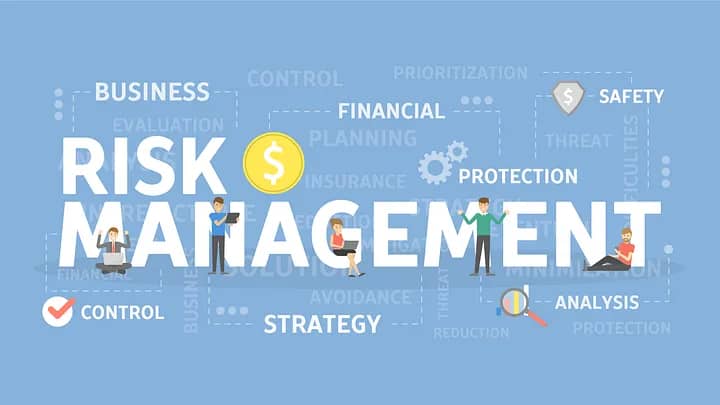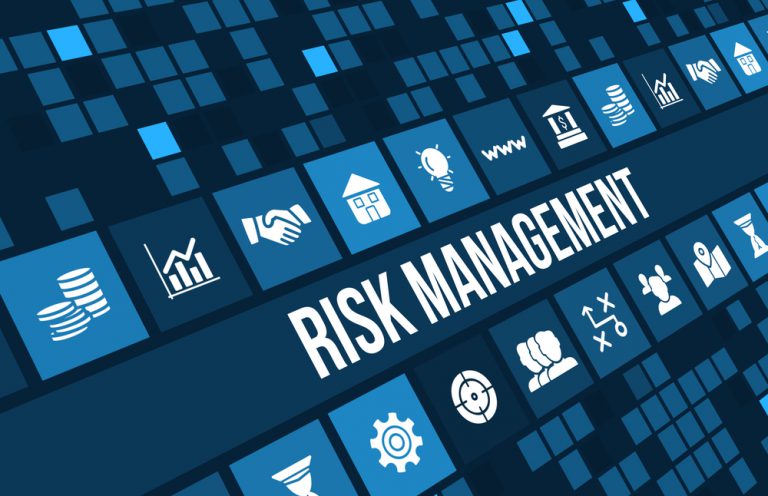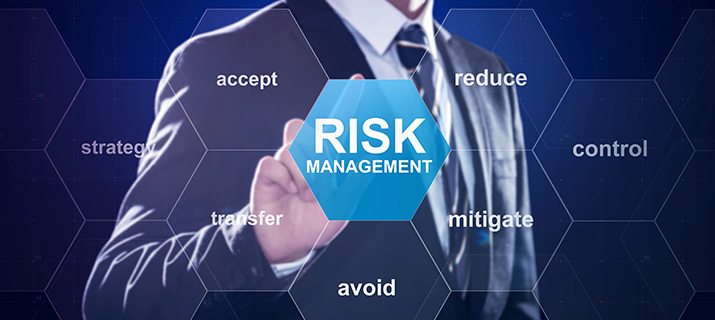Risk Management in the Digital Age: 5 Ways to Protect Your Online Presence
Risk management has become a vital part of everyday life in this digital age. Even if you are an individual or a business, your online presence is constantly under threat from hackers, malware, identity thieves, and other cyber risks. According to a 2024 report by Cybersecurity Ventures, cybercrime damages are expected to reach $10.5 trillion annually by 2025, making it one of the biggest financial risks worldwide. This staggering figure highlights why risk management is no longer just a technical concern but a strategic necessity.
Experts like Bruce Schneier, a renowned security technologist, emphasize that “security is not a product, but a process.” This means managing risks effectively requires ongoing vigilance and proactive measures. So how can you protect your online presence in this complex digital landscape? This blog post explores five essential ways to apply risk management principles to safeguard your digital life.
Have you ever wondered if your online activities are truly secure? Let’s dive into practical steps that can help you stay safe.
—
Understanding Risk Management in the Digital Age
Before exploring the five ways to protect your online presence, it’s important to understand what risk management means in the digital context. Risk management involves identifying potential threats, assessing their impact, and implementing controls to reduce or eliminate those risks.
In digital environments, risks include data breaches, phishing attacks, ransomware, identity theft, and reputational damage. The goal of risk management is to minimize the likelihood of these events and reduce their consequences if they do occur.
According to a 2023 study by the Ponemon Institute, the average cost of a data breach is $4.45 million. This cost includes not only financial losses but also damage to brand reputation and customer trust. Effective risk management helps prevent such costly incidents.
—
1. Conduct Regular Security Audits

One of the foundational pillars of risk management is conducting regular security audits. These audits are systematic reviews of your digital systems to identify vulnerabilities and weaknesses.
Why Security Audits Matter
– They uncover hidden security gaps before attackers find them.
– They ensure compliance with industry standards and regulations.
– They provide a roadmap for improving security measures.
For example, a 2024 survey by Verizon found that 85% of breaches involved vulnerabilities that could have been detected through regular audits. This shows how audits are critical in preventing cyber incidents.
How to Perform Effective Security Audits
– Use automated tools to scan for malware, outdated software, and configuration errors.
– Review user access controls to ensure only authorized personnel have access to sensitive data.
– Test your systems against common attack methods like phishing and SQL injection.
– Document findings and prioritize fixes based on risk severity.
Regular audits not only protect your digital assets but also demonstrate a commitment to security that can reassure customers and partners.
—
2. Use Strong Passwords and Enable Two-Factor Authentication (2FA)

Passwords are the first line of defense in digital risk management. Yet, weak or reused passwords remain a major cause of security breaches.
The Importance of Strong Passwords
– Complex passwords are harder for hackers to guess or crack.
– Unique passwords for different accounts prevent a domino effect if one is compromised.
– Password managers can help generate and store strong passwords safely.
According to a 2023 report by NordPass, the most common passwords like “123456” and “password” are still widely used, putting millions at risk.
What is Two-Factor Authentication?
Two-factor authentication adds an extra layer of security by requiring two forms of verification before granting access. This could be a password plus a code sent to your phone or a biometric scan.
Benefits of 2FA
– Even if a password is stolen, unauthorized access is blocked.
– It significantly reduces the risk of account takeovers.
– Many services now offer easy-to-enable 2FA options.
Enabling 2FA is one of the simplest yet most effective risk management steps you can take to protect your online presence.
—
3. Encrypt Sensitive Data

Encryption is a powerful tool in risk management that protects data from unauthorized access by converting it into unreadable code.
Why Encryption is Essential
– It safeguards data both at rest (stored) and in transit (being transmitted).
– It protects sensitive information like financial details, personal identity, and business secrets.
– It helps comply with data protection regulations such as GDPR and CCPA.
For instance, websites that use HTTPS protocols encrypt data exchanged between the user and the server, preventing interception by attackers.
Types of Encryption to Consider
– Full disk encryption for laptops and mobile devices.
– End-to-end encryption for messaging apps.
– Database encryption for stored customer data.
A 2024 survey by IBM found that organizations using encryption experienced 40% fewer data breaches, emphasizing its importance in risk management.
—
4. Monitor Your Online Reputation and Brand

Risk management is not only about technical defenses but also about managing your digital footprint and reputation.Risk Management 101: 7 Principles Every Leader Should Know
Why Online Reputation Matters
– Negative reviews or fake accounts can damage trust and deter customers.
– Cybercriminals may impersonate your brand to commit fraud.
– Early detection of issues allows quick response and damage control.
How to Monitor Effectively
– Use tools like Google Alerts, Mention, or Brandwatch to track mentions of your name or business.
– Regularly review social media platforms for suspicious activity.
– Engage with your audience to build trust and transparency.
According to a 2023 report by Edelman, 81% of consumers say trust in a brand influences their buying decisions, making reputation monitoring a key part of risk management.
—
5. Develop a Robust Disaster Recovery Plan

Even with the best risk management practices, breaches and attacks can still happen. Having a disaster recovery plan ensures you can respond quickly and minimize damage.
Key Elements of a Disaster Recovery Plan
– Clear procedures for responding to different types of cyber incidents.
– Regular backups of critical data stored securely offsite or in the cloud.
– Defined roles and responsibilities for team members during a crisis.
– Communication plans to inform stakeholders and customers transparently.
Benefits of Disaster Recovery Planning
– Reduces downtime and financial losses.
– Helps maintain customer confidence.
– Supports compliance with legal and regulatory requirements.
A 2024 study by Gartner found that companies with tested disaster recovery plans recover 60% faster from cyber incidents than those without.
—
Additional Tips for Effective Risk Management
Beyond the five main strategies, here are more ways to enhance your digital risk management:
– Keep software and systems updated to patch vulnerabilities.
– Educate yourself and your team about phishing and social engineering attacks. How to Train Your Team on Risk Management: 5 Effective Methods
– Limit data access on a need-to-know basis.
– Use firewalls and antivirus software for added protection.
– Regularly review and update your risk management policies. 8 Risk Management Best Practices for Tech Startups
—
Frequently Asked Questions (FAQs)
What is risk management in cybersecurity?
A: Risk management in cybersecurity involves identifying potential threats to digital systems and implementing measures to reduce their impact.
How often should I update my passwords?
A: It’s best to update passwords every 3-6 months and avoid reusing them across different accounts.
Can small businesses benefit from risk management?
A: Absolutely. Small businesses are often targets of cyberattacks and can suffer significant losses without proper risk management.
What is the role of employee training in risk management?
A: Employee training helps prevent human errors that lead to security breaches, such as falling for phishing scams.
How can I stay informed about new cyber threats?
A: Subscribe to cybersecurity newsletters, follow trusted experts, and participate in industry forums to stay updated.
—
Conclusion
Risk management in the digital age is a continuous journey, not a one-time fix. By conducting regular security audits, using strong passwords and two-factor authentication, encrypting sensitive data, monitoring your online reputation, and developing a disaster recovery plan, you can significantly reduce your exposure to cyber threats.
As cybercriminals become more sophisticated, your approach to risk management must evolve too. The question is, are you ready to take the necessary steps to protect your online presence today?
—
References and Further Reading
– Cybersecurity Ventures, “Cybercrime Report 2024,” https://cybersecurityventures.com/cybercrime-report-2024/
– Ponemon Institute, “Cost of a Data Breach Report 2023,” https://www.ibm.com/security/data-breach
– Verizon, “Data Breach Investigations Report 2024,” https://www.verizon.com/business/resources/reports/dbir/
– NordPass, “Most Common Passwords 2023,” https://nordpass.com/most-common-passwords-2023/
– IBM Security, “Encryption and Data Protection Study 2024,” https://www.ibm.com/security/encryption
– Edelman Trust Barometer 2023, https://www.edelman.com/trust/2023-trust-barometer
– Gartner, “Disaster Recovery Trends 2024,” https://www.gartner.com/en/documents/3987654
—









